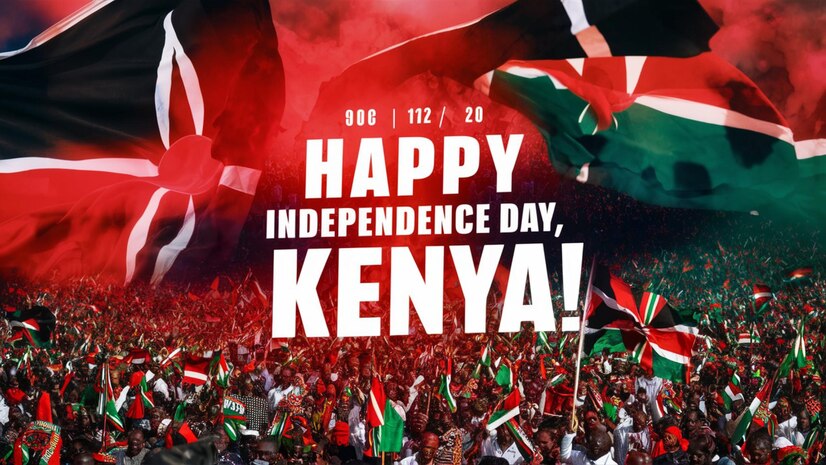How Kenya Gained Independence
How Kenya Gained Independence: The Struggle from Beginning to End
Kenya’s road to independence is a deeply significant chapter in its history, characterized by fierce resistance, bloodshed, diplomatic negotiations, and nationalistic fervor. The process spanned decades of struggle against British colonial rule, culminating in the birth of the Kenyan nation on December 12, 1963. This article traces the journey from the early days of colonization to the eventual victory of independence.
1. Colonial Beginnings: The Arrival of the British in Kenya
Kenya’s colonial history began in the late 19th century when the region came under the control of the British Empire. In 1888, the British East Africa Company was granted a royal charter by Queen Victoria to manage and administer the territory known as British East Africa, which included modern-day Kenya and Uganda.
The construction of the Uganda Railway, which began in 1896, marked a turning point in the formal colonization of Kenya. The British sought to secure a route from the Kenyan coast to the interior, primarily to facilitate access to Uganda. This railway not only physically linked the coastal and interior regions but also laid the foundation for British control of the Kenyan Highlands, a region known for its fertile land.
As the British consolidated their grip on Kenya, they declared the area a British protectorate in 1895, which was then transformed into a colony in 1920. Over time, thousands of British settlers, mainly from the United Kingdom and South Africa, were encouraged to move to Kenya and establish farms, especially in the agriculturally rich Highlands. However, this came at a tremendous cost to the indigenous communities who were forcibly displaced from their ancestral lands to make room for European settlers.
2. Displacement of Indigenous Peoples: Loss of Land and Rights
One of the greatest sources of tension during the colonial era was the alienation of land. The British seized vast tracts of land from indigenous groups, especially the Kikuyu, Maasai, and Luo peoples, pushing them into crowded reserves or forcing them to work as laborers on European farms. The Kikuyu, in particular, bore the brunt of this land dispossession as they had traditionally occupied the fertile Central Highlands, which became the core of European settlement.
The colonial government imposed a host of discriminatory laws that restricted the movement and rights of Africans. Indigenous people were required to carry kipande (identification papers) at all times, and many were forced to work on European farms to pay taxes imposed by the colonial administration. These policies, along with the loss of land, fueled deep resentment among the local population.
3. The Rise of African Nationalism: Early Resistance Movements
As the injustices of colonial rule intensified, resistance began to emerge. The early 20th century saw the rise of several African organizations advocating for the rights of indigenous Kenyans. These early movements were largely peaceful and focused on grievances related to land, labor, and political representation.
The Young Kikuyu Association (later renamed the Kenya African Union, or KAU), founded in the 1920s, was one of the first formal organizations aimed at addressing African concerns. Led by figures like Harry Thuku and later Jomo Kenyatta, KAU demanded better working conditions, the return of land, and greater political representation for Africans. While these early efforts were important in raising political consciousness, they faced brutal suppression by the colonial authorities.
In 1921, Harry Thuku, one of the first African nationalists, was arrested for his activism. His arrest sparked widespread protests, culminating in a violent clash between police and protestors in Nairobi, where over 20 people were killed. This marked one of the first significant confrontations between the British colonial government and African nationalists, setting the stage for future resistance.
4. The Mau Mau Uprising: The Armed Struggle for Freedom
By the 1940s and 1950s, the demands for independence had grown louder and more radical. The peaceful efforts of early nationalist leaders had not achieved significant results, leading some Kenyans to adopt a more militant approach. The Mau Mau Uprising (1952–1960) was the most significant and violent rebellion against British rule in Kenya.
The Mau Mau movement was primarily composed of Kikuyu fighters, though it also included members from other ethnic groups. The movement sought to reclaim stolen land and expel the British from Kenya. The fighters, known as Mau Mau, waged a guerrilla war against the British colonial administration and white settlers, primarily in the Central Highlands and the forests surrounding Mount Kenya.
In response to the growing unrest, the British declared a state of emergency in October 1952. Thousands of suspected Mau Mau members and sympathizers were arrested and detained without trial, while others were executed. The British carried out brutal counter-insurgency campaigns, including mass detentions, torture, and the destruction of villages suspected of harboring Mau Mau fighters. The war led to the death of thousands of Africans and a smaller number of European settlers, making it one of the most violent episodes in Kenya’s history.
While the British managed to suppress the Mau Mau insurgency militarily, the uprising had a profound impact on Kenya’s political landscape. It drew international attention to the plight of indigenous Kenyans and demonstrated the depth of anti-colonial sentiment in the country.
5. Political Reforms and the Push for Independence
The Mau Mau Uprising forced the British to reconsider their policies in Kenya. By the late 1950s, it became increasingly clear that British colonial rule in Africa was no longer sustainable. At the same time, nationalist leaders like Jomo Kenyatta, who had been imprisoned for alleged involvement in the Mau Mau rebellion, emerged as key figures in the push for political reforms.
In 1960, the British government began negotiations with African political leaders on a gradual transition to self-rule. The Lancaster House Conferences, held in London between 1960 and 1962, were crucial in shaping Kenya’s path to independence. These conferences brought together representatives from different Kenyan political parties, including the Kenya African National Union (KANU) led by Jomo Kenyatta and the Kenya African Democratic Union (KADU) led by Ronald Ngala.
At the Lancaster House Conferences, the framework for a new Kenyan constitution was established, which provided for a multi-racial government and the gradual transfer of power to African leaders. The agreement also addressed the issue of land redistribution, which had been a central grievance for many Kenyans.
6. Kenya’s First Elections and the Road to Independence
In 1961, Kenya held its first general elections under the new constitutional framework. KANU, the party that advocated for a strong central government and was backed by the majority Kikuyu and Luo communities, emerged victorious. However, Jomo Kenyatta, the party’s leader and a symbol of the independence struggle, was still in detention at the time of the election. Due to international and local pressure, the British colonial government released Kenyatta from prison in 1961, recognizing him as the rightful leader of the independence movement.
As the leader of KANU, Kenyatta played a crucial role in the final negotiations with the British, ensuring a smooth transition of power. On June 1, 1963, Kenya became a self-governing country with Kenyatta as its first Prime Minister. Full independence was granted on December 12, 1963, marking the end of British colonial rule and the beginning of Kenya as a sovereign nation. Kenyatta would later become the first President of the Republic of Kenya when the country became a republic on December 12, 1964.
7. Challenges of Independence: Building a New Nation
Independence was not the end of Kenya’s challenges. The new government had to contend with deep divisions within society, particularly between the country’s different ethnic groups. There were also significant economic challenges, as the country was heavily reliant on agriculture, and many Kenyans still lived in poverty.
One of the new government’s primary goals was land reform, as many indigenous Kenyans were still landless due to the colonial land policies. While some progress was made in redistributing land to African farmers, the process was slow and often marred by corruption and favoritism. The unequal distribution of land remains a contentious issue in Kenya to this day.
8. Legacy of the Independence Movement
Kenya’s independence struggle left a profound legacy on the nation’s political, social, and cultural fabric. The Mau Mau Uprising is now remembered as a symbol of resistance against oppression, and figures like Jomo Kenyatta, Dedan Kimathi, and others are celebrated as heroes of the independence movement. Every year on Mashujaa Day (Heroes’ Day), Kenyans honor those who fought for the country’s freedom.
The independence movement also instilled a strong sense of national pride and identity, even as Kenya continues to grapple with the challenges of ethnic diversity and inequality. The creation of a new national identity, built on the foundations of independence and self-determination, remains one of the most enduring legacies of the independence struggle.
Conclusion
Kenya’s journey to independence was long and arduous, marked by years of resistance, political struggle, and sacrifice. From the early days of colonization and land alienation to the armed resistance of the Mau Mau Uprising and the diplomatic negotiations that followed, Kenya’s independence was hard-won. On December 12, 1963, the Kenyan flag was raised for the first time, symbolizing the end of British colonial rule and the beginning of a new era for the country. Today, Kenya continues to celebrate its independence while building on the foundations laid by those who fought for freedom.








